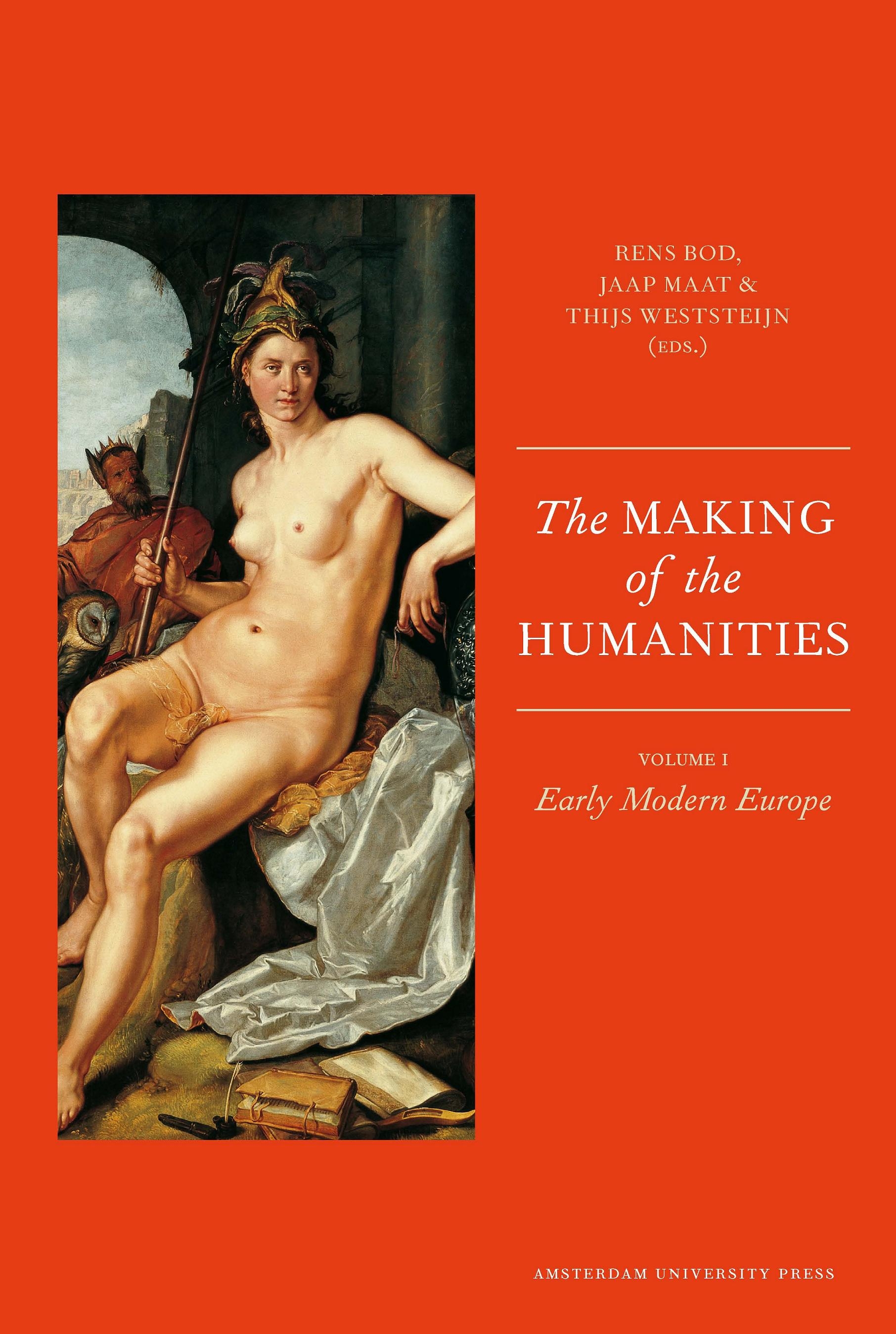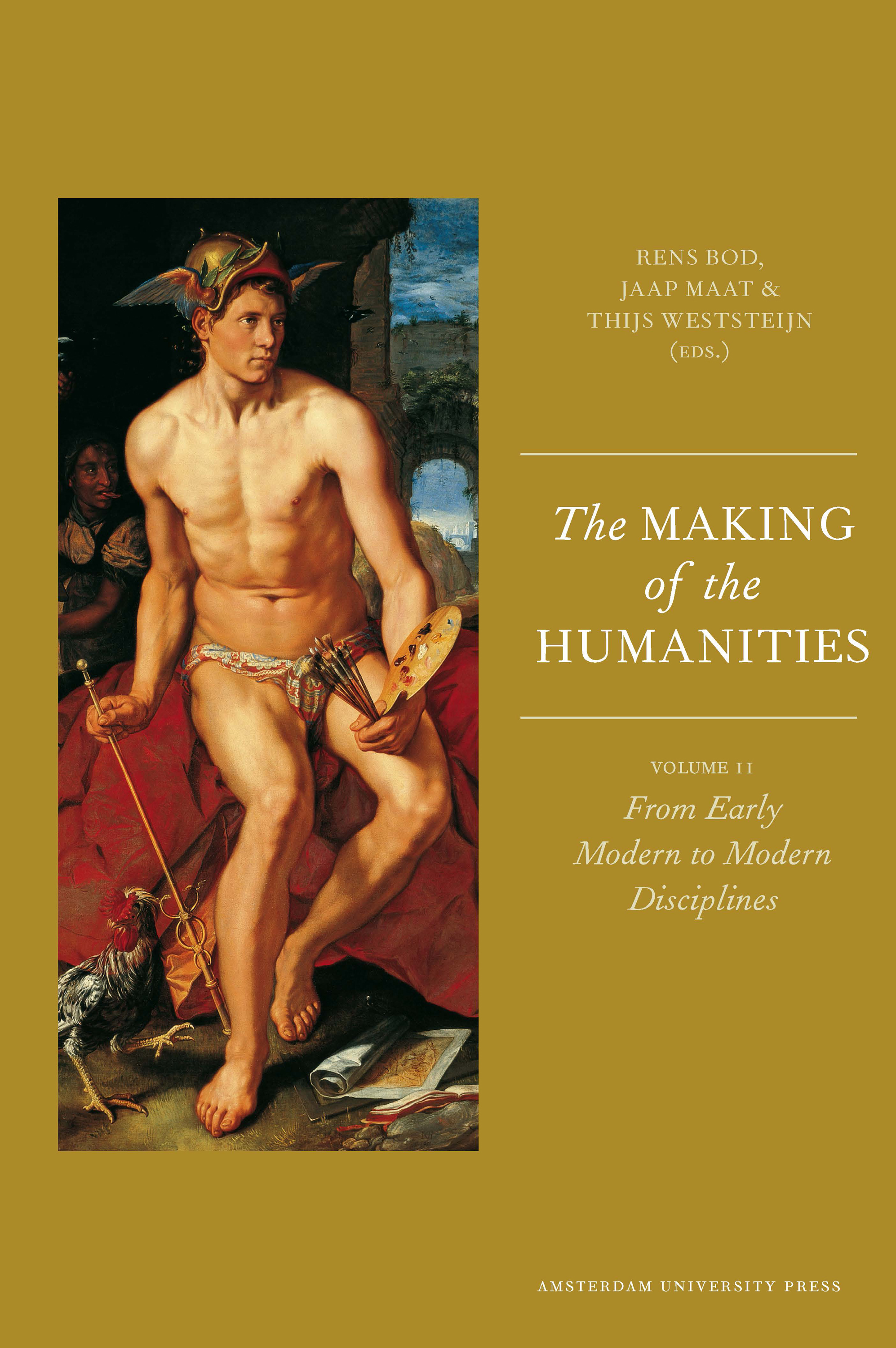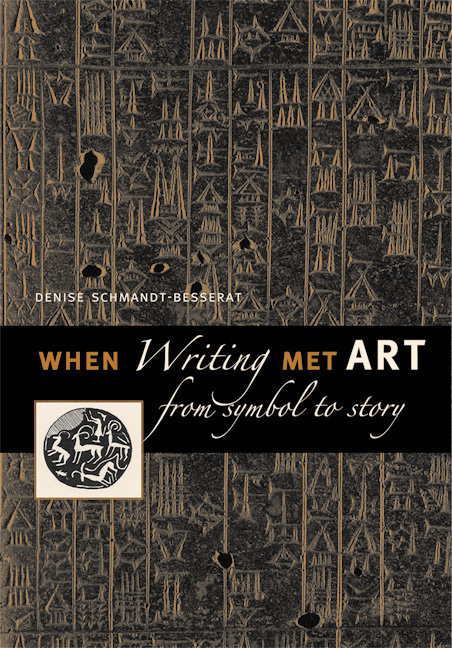Rens Bod, Jaap Maat, Thijs Weststeijn (eds.): The Making of the Humanities, Vols. 1–2 (2010–12)
Filed under book | Tags: · art, art history, historiography, history, history of philosophy, history of science, humanities, language, linguistics, literary theory, logic, musicology, philology, philosophy


“The Making of the Humanities is the first step towards the development of a comparative history of the humanities. Specialists in philology, musicology, art history, linguistics, literary theory, and other disciplines highlight the intertwining of the various fields and their impact on the sciences.
The first volume in the series focuses on the early modern period. Different perspectives reveal how the humanities developed from the ‘liberal arts’, via the curriculum of humanistic schools, to modern disciplines. The authors show in particular how discoveries in the humanities contributed to a secular world view, pointing up connections with the scientific revolution. The main themes are: the humanities versus the sciences; the visual arts as liberal arts; humanism and heresy; language and poetics; linguists and logicians; philology and philosophy; the history of history. Contributions come from a selection of internationally renowned European and American scholars, including Floris Cohen, David Cram, and Ingrid Rowland. The book offers a wealth of insights for specialists, students, and those interested in the humanities in a broad sense.
The second volume investigates the changes in subject, method and institutional context of the humanistic disciplines around 1800, offering a wealth of insights for specialists and students alike. Point of departure is the pivotal question whether there was a paradigm shift in the humanities around 1800 or whether these changes were part of a much longer process. The authors provide an overarching perspective including philology, musicology, art history, linguistics, historiography, philosophy and literary theory. They also make clear that the influence from the East, from the Ottoman Empire to China, was crucial for the development of the European humanistic disciplines.”
Publisher Amsterdam University Press, Amsterdam
Open Access
ISBN 9789089642691 & 9789089644558
400 & 432 pages
Reviews: Sandrine Maufroy (H-Net, 2011, of Vol 1), Anja-Silva Goeing (Renaissance Quarterly, 2012, of Vol 1), Charles G. Nauert (Intellectual History Review, 2012, of Vol 1)
Conference: 2008, 2010.
Publisher: Vol. I, Vol. II.
OAPEN: Vol. I, Vol. II.
Volume I – Early Modern Europe (updated on 2022-12-20)
Volume II – From Early Modern to Modern Disciplines (updated on 2022-12-20)
Volume III
Johanna Drucker: History of the/my Wor(l)d (1990)
Filed under artist publishing | Tags: · feminism, history, memory

A striking alternative to the familiar telling of historical events, Drucker’s account of mythic and major events in the course of western civilization marches roughshod over received traditions. The combination of typographic innovation, visual puns and linguistic play are unique elements of her style. A richly suggestive work interweaving official history and individual memory.
“Several themes interweave in this book: a feminist rewriting of the history of the world, an opposition between official history and personal memory, a critique of feminist theoretical attitudes towards language as patriarchal, and all sorts of graphical and textual puns and play. The book is a tribute to my mother, and the drum majorette who opens the book is a figure that corresponds to her early years, youth, and activities as a baton twirling teen in Downer’s Grove, Illinois. I had learned language, and literature, through an intense and intimate relation with her. The feminist dogma of language as patriarchal didn’t fit the erotic and personal experience of my relation to the literary through the relation to her, even male identified as she was. She may have been the law, and the symbolic, but she was fiercely feminine and feminist as well. So the red text erupts through the black, making memory a strain of presence within the history retold.” (author)
The work first appeared in the letterpress edition in 1990. Five years later it was published in two-color offset by Granary Books.
Publisher Druckwerk, Cambridge, MA, 1990
40 pages
via Danny Snelson
Interview with the author (Tate Shaw, The Journal of Artists’ Books, 2007)
Publisher (1995 Edition, Old site)
Publisher (1995 Edition, New site)
PDF (updated on 2018-12-31)
JPGs (added on 2018-12-31)
Denise Schmandt-Besserat: When Writing Met Art: From Symbol to Story (2007)
Filed under book | Tags: · antiquity, archaeology, art, art history, history, mesopotamia, middle east, painting, writing

“Denise Schmandt-Besserat opened a major new chapter in the history of literacy when she demonstrated that the cuneiform script invented in the ancient Near East in the late fourth millennium BC—the world’s oldest known system of writing—derived from an archaic counting device. Her discovery, which she published in Before Writing: From Counting to Cuneiform and How Writing Came About, was widely reported in professional journals and the popular press. In 1999, American Scientist chose How Writing Came About as one of the “100 or so Books that shaped a Century of Science.”
In When Writing Met Art, Schmandt-Besserat expands her history of writing into the visual realm of communication. Using examples of ancient Near Eastern writing and masterpieces of art, she shows that between 3500 and 3000 BC the conventions of writing—everything from its linear organization to its semantic use of the form, size, order, and placement of signs—spread to the making of art, resulting in artworks that presented complex visual narratives in place of the repetitive motifs found on preliterate art objects. Schmandt-Besserat then demonstrates art’s reciprocal impact on the development of writing. She shows how, beginning in 2700-2600 BC, the inclusion of inscriptions on funerary and votive art objects emancipated writing from its original accounting function. To fulfill its new role, writing evolved to replicate speech; this in turn made it possible to compile, organize, and synthesize unlimited amounts of information; and to preserve and disseminate information across time and space.
Schmandt-Besserat’s pioneering investigation of the interface between writing and art documents a key turning point in human history, when two of our most fundamental information media reciprocally multiplied their capacities to communicate. When writing met art, literate civilization was born.”
Publisher University of Texas Press, 2007
ISBN 0292713347, 9780292713345
134 pages

